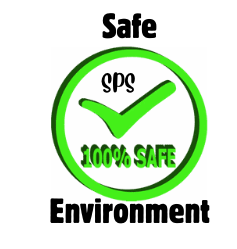/Screenshot%202025-04-01%20at%201_20_44%E2%80%AFPM.png)
SAFE ENVIRONMENT

Creating a safe environment at SPS is imperative for both the physical safety and emotional wellbeing of students. A comprehensive approach to safety involves not only physical security measures but also fostering a supportive, inclusive, and respectful school culture.
Physical Safety Measures
1. Secure Entry Points: Implement controlled access with locked doors and entry points that require identification or permission to access. This can reduce the risk of unauthorized entry.
2. Security Personnel: Employing trained security personnel or school resource officers can provide a visible safety presence, deter potential threats, and allow for rapid response to incidents.
3. Surveillance Systems: Using cameras in public areas can act as a deterrent and provide evidence in case of incidents. It is crucial to balance surveillance with privacy concerns.
4. Emergency Preparedness: Regular drills for emergencies such as fires, earthquakes, lockdowns, and other potential threats are essential. These help ensure that both staff and students know how to act swiftly and appropriately.
5. Safe Physical Environment: Regular checks and maintenance to ensure that school facilities are up to safety codes and free of hazards (e.g., broken equipment, slippery floors).
Psychological and Emotional Safety
1. Anti-Bullying Policies: Clearly defined and enforced anti-bullying policies help create a safer and more welcoming environment for all students. Procedures should be in place for students to report bullying confidentially.
2. Mental Health Support: Access to school counselors or mental health professionals who can provide support and intervene in situations where students may be experiencing emotional distress.
3. Inclusive Environment: Programs that promote inclusiveness and respect for diversity can reduce feelings of isolation and conflict among students.
4. Parental and Community Involvement: Engaging families and community members in school activities and decision-making processes can foster a more supportive and secure environment.
Educational and Programmatic Initiatives
1. Character Education Programs: Implementing curriculum that fosters ethical, responsible, and caring behavior can have a positive impact on the school culture.
2. Communication Channels: Regular and clear communication between the school and families about safety policies, school news, and student welfare helps build trust and cooperation.
4. Staff Training: Regular training for all school staff on safety protocols, recognizing signs of distress or abuse in students, and effective communication and disciplinary methods.
Engagement and Observation
1. Student Involvement: Involving students in safety planning and decision-making can empower them and provide valuable insights into potential safety concerns.
2. Observation: Teachers and staff should be trained to be observant of students’ behavior and social interactions, which can provide early warning signs of distress, alienation, or aggression.